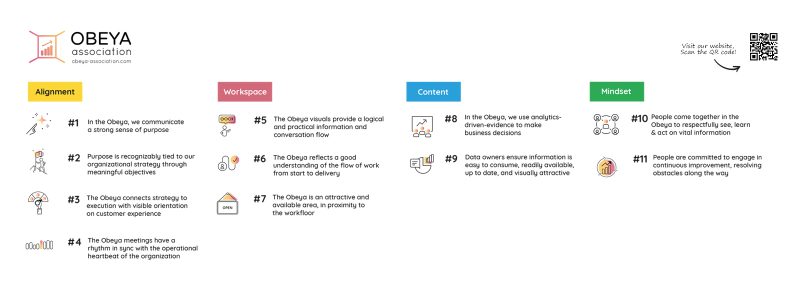Origins
The word Obeya means big or a large room in Japanese. Toyota first created these rooms during production of the Prius in the 1990s. Tasked with building a car for the 21st century, Takeshi Uchiyamada, the Toyota Chief Engineer who led the Prius project, created the Obeya.
He realized that to create the new car in a compressed timeline, he needed to integrate the efforts of diverse experts in engineering, design, production – everyone who had a hand in the final product. Eventually, the meetings started to include new people, such as representatives of marketing and sales.
He met with leaders from each area two to three times a week, with the number of meetings accelerating as the project deadline approached. Prius is a case in point for Obeya and the Toyota Production System. Prius reached the market more than a decade before Toyota’s competitors and still ranks high among the most popular electric vehicles.
Adoption
Obeya’s success drew the attention of business leaders and executives across industries who sought to emulate Toyota’s approach and achieve similar outcomes. Since, several other industries have adopted this concept. For example, Nike set up an Obeya for its IT department in Europe. It has also become a powerful addition to the Lean toolbox. Manufacturing companies, such as Timken, Volvo Group and others employ Obeyas as valuable contributors to their lean enterprise initiatives.
You can envision this concept as ground control / war room / command center for your strategic projects. In this context, you should first establish the goal or business strategy for the project. Then, you should define what success will look like even before you start. Creating an Obeya entails drawing together leaders from across departments in an organization to focus on big picture issues involved with a single project or initiative.
While most often associated with product development, Obeya is also a viable tool to manage a new business strategy.
What is Obeya
Obeya is a dedicated space for team-based work designed to remove the barriers that prevent the knowledge-sharing and collaboration that enables effective planning, problem-solving, and decision-making. A well-designed Obeya room contains everything that the team needs to complete a task efficiently and effectively. While every Obeya room is different, one of its defining features is a visual display that acts as the focal point for your team’s project.
When challenges arise, visual information can display proposed solutions. The idea is to have all information available to everyone at all times.
It is also a tool to debate and discuss big picture issues. It creates a shared understanding of how the departments involved can work together towards a single goal. Participants think deeply about customer needs, key performance indicators and goals.
Obeya also helps develop teamwork at the management level and keep everyone focused on accomplishing strategy. It gives leaders a clear view of what everyone is working on, as well as why and how. They also can see how their own department’s efforts support or hinder those of their colleagues.
Obeya Room
Typically, walls plastered with posters, whiteboards, graphs, and all other relevant information to the project displayed in a clear and logical manner adorn Obeyas. Obeya rooms fuel creativity, break down silo barriers and increase collaboration on all levels while developing problem-solving skills. An Obeya room can be intended to shorten the Plan-Do-Check-Act (PDCA) cycle. There even is a physical method where the walls are structured according to PDCA principles.
Often the rooms have iterative meeting rhythms in which the time span between two Obeya meeting iterations is short (say 2 weeks). This rhythm allows for Continuous Improvement, best executed in multiple consecutive small steps rather than a big bang approach.
However, the Obeya is not just about the room or the visual representation of information. Obeya rooms are about installing mechanisms (Kata) to collaborate, manage the business and solve problems more effectively.
Principles
The Obeya Association provides 11 principles that you can use to structure an Obeya. The 11 principles are:
- We communicate a strong sense of purpose
- Purpose is recognizably tied to our organizational strategy through meaningful objectives
- Obeya connects strategy to execution with visible orientation on customer experience
- Meetings have a rhythm in sync with the operational heartbeat of the organization
- Visuals provide a logical and practical information and conversation flow
- The Obeya reflects a good understanding of the flow of work from start to delivery
- Obeya is an attractive and available area, in proximity to the workfloor
- We use analytics-driven-evidence to make business decisions
- Data owners ensure information is easy to consume, readily available, up to date, and visually attractive
- People come together in the Obeya to respectfully see, learn & act on vital information
- People are committed to engage in continuous improvement, resolving obstacles along the way






